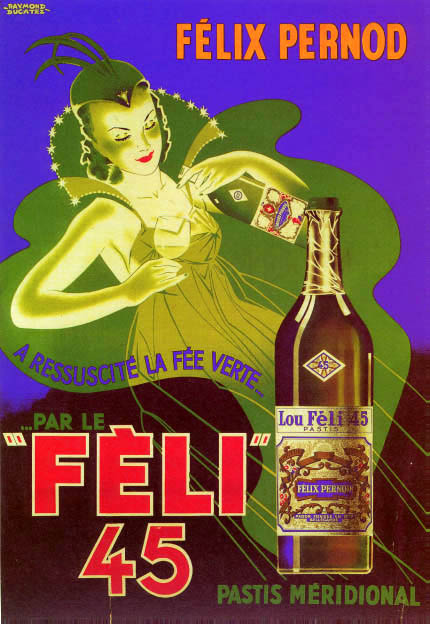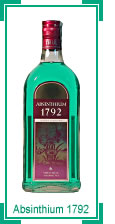
Delicate Bitterness from Poland
Not really. This is something rather different, with a noble and ancient pedigree which actually predates absinthe (Stefan Falimierz 1534) Absinthist in Poland has sent us a picture of this little known wormwood drink, which is called Piołunowka (the Polish word for wormwood is piołun – the French word for wormwood is absinthe) According to Wikipedia:
Piołunowka has much higher levels of thujone than absinthe because it is not distilled. Many people produce it today to try and feel the ‘absinthe effect’
The level of thujone in Absinthist’s Piołunowka is unknown – anyone care to make a guess? There are of course numerous places that sell a ready to use absinthe kit although this Polish drink uses only wormwood, no costly star anise, fennel, calamus, hyssop and so forth. As I have mentioned before I have been given a strange recipe for Známý likér absintovy (well known liquor absinth) from a late 19th Century Czech text. It seems to call for the addition of lemon oils – as well as the usual absinthe regulars – rather curious, which is why I am currently checking it with a more informed source. This recipe also requires no distillation – a kind of folk recipe absinthe which could be fun to try for Christmas!
What I also find very curious is that Absinthist – an expert herbalist – describes his drink as having a “delicate bitterness“. This is contrary to what others preach at us. We are told that macerating wormwood in high proof alcohol creates something “vile-tasting and insanely bitter” – quite wrong it seems.
The very same writer has penned another polemic on the wrongs of Czech absinth, written words which cry out for a little sugar when reading, due to their bitterness. The writer might like to ponder the words of wiser men: “The worst offense that can be committed by a polemic is to stigmatize those who hold a contrary opinion as bad and immoral men.” (John Stuart Mill).
Anyway, fancy making piołunówka? Here’s how simple it really is:
I have made piołunówka 39.6%, rye-base, no sugar, assemblage of distillate and macerate. Wormwoody to the boot, pleasant herbal aroma, delicate bitterness, medium alcohol bite.
The recipe is simple, makes 300ml of piołunówka
1 coffeespoon of dried wormwood leaves macerate for 24h in 100ml of vodka, then strain and dilute it with 200ml of vodka, let it rest, sugar if you wish. The simplest recipes yield the best results.
The main difference between it and Falimierz’ s recipe: no sugar, wormwood leaves instead of flowertops, slightly less strong.
I wonder if Absinthist actually used spirytus rektyfikowany? A high proof Polish spirit that I understand cannot be legally exported from Poland. The comments box below is open for comments about this drink / alternative recipes – and nothing else.


















